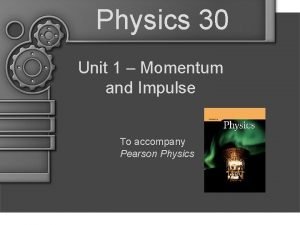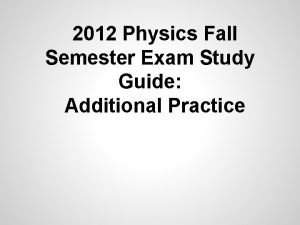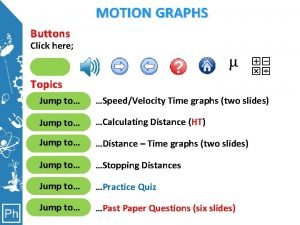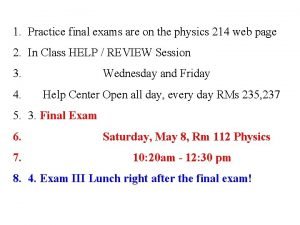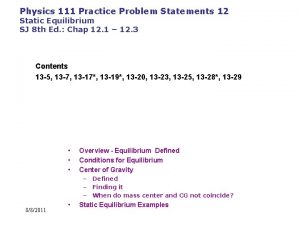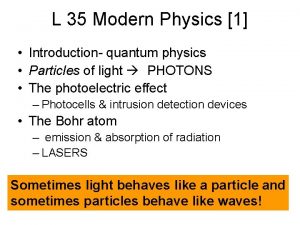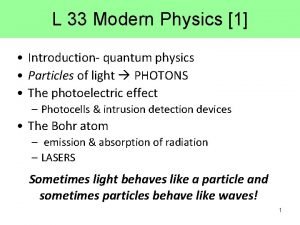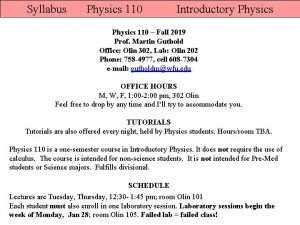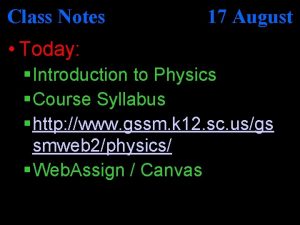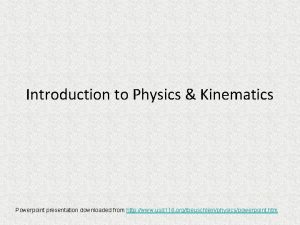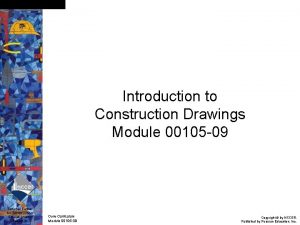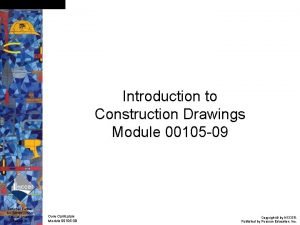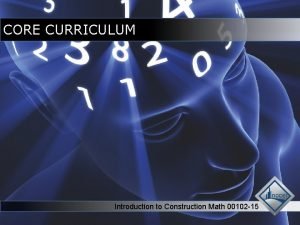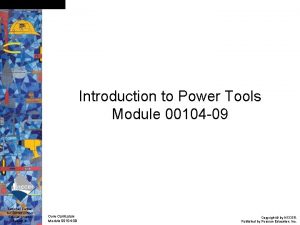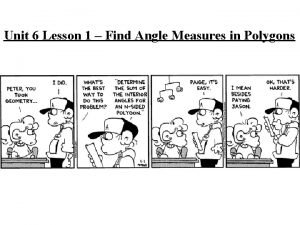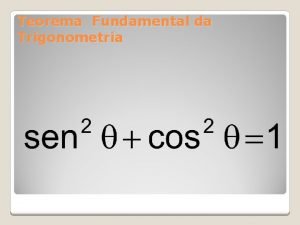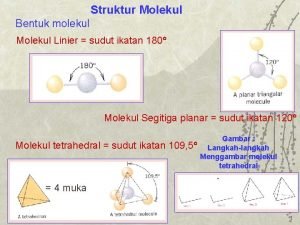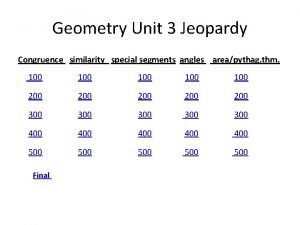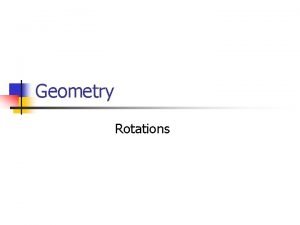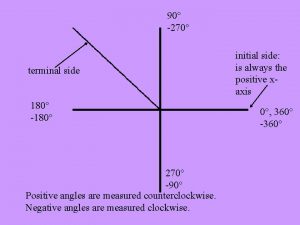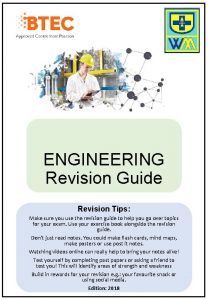Revision exam tips Introduction to Physics exam 180


























































- Slides: 58

Revision : exam tips

Introduction to Physics exam • 180 minutes – 60% of course assessment • Section A : 20 multiple choice questions for 15 marks – circle responses on answer sheet • Section B : 16 basic problems for 30 marks – write answers in the spaces provided • Section C : 5 advanced problems for 15 marks – write answers in the spaces provided

Introduction to Physics exam • Only allowed to take in Standard Exam Calculator (“TI-30 XB”) • Formula sheet provided (see next slide) • Make sure you show all working for Sections B and C • Note : all exam questions are taken from the textbook!

Formula sheet

Formula sheet

Formula sheet

Problem-solving tips (1/4)

Problem-solving tips (1/4)

Problem-solving tips (2/4) • Determine what topic the problem is about 1. 2. 3. 4. 5. Linear mechanics Rotational mechanics Fluid mechanics Thermodynamics Electricity • This will help identify the appropriate section of the formula sheet • This will help with symbol confusion, e. g. in mechanics p=momentum, in fluids p=pressure

Problem-solving tips (3/4) • Draw a simple diagram Before: After: • Subconscious starts working on the problem!

Problem-solving tips (4/4)

Problem-solving tips (summary) • Watch out that all numbers are in S. I. units • What topic is the problem about? (linear / rotational / fluids / thermodynamics / electricity) • Draw a diagram! Which variables have you been given and which are unknown? • Do as much algebra as possible before substituting in numbers

Revision : linear mechanics

Linear Mechanics key facts (1/8) Average velocity = (Total displacement)/(Total time)

Linear Mechanics key facts (2/8)

Linear Mechanics key facts (3/8) • Newton’s Laws define the concept of force, measured in Newtons [N]

Linear Mechanics key facts (4/8) e. g. projectile motion …

Linear Mechanics key facts (4/8) e. g. inclined plane … x-direction: y-direction:

Linear Mechanics key facts (5/8) • Motion in a circle :

Linear Mechanics key facts (6/8)

Linear Mechanics key facts (7/8)

Linear Mechanics key facts (8/8)

Practice exam questions

Practice exam questions

Practice exam questions

Practice exam questions

Practice exam questions

Practice exam questions

Practice exam questions

Practice exam questions

Practice exam questions

Next steps • Make sure you are comfortable with unit conversions • Review the linear mechanics key facts • Familiarize yourself with the linear mechanics section of the formula sheet • Try questions from the sample exam papers on Blackboard and/or the textbook

Revision : rotational mechanics

Formula sheet

Formula sheet

Formula sheet

Formula sheet

Rotational Mechanics key facts (1/8) • Analogous formulae to linear mechanics apply, where linear quantities are replaced by rotational quantities

Rotational Mechanics key facts (1/8) • Analogous formulae to linear mechanics apply, where linear quantities are replaced by rotational quantities

Rotational Mechanics key facts (1/8) • Analogous formulae to linear mechanics apply, where linear quantities are replaced by rotational quantities

Rotational Mechanics key facts (2/8) Analogous to linear case:

Rotational Mechanics key facts (3/8) • In linear motion, force causes acceleration • In rotational motion, the torque of a force causes angular acceleration about an axis/pivot axis

Rotational Mechanics key facts (4/8) torque = rotational inertia x angular acceleration

Rotational Mechanics key facts (5/8)

Rotational Mechanics key facts (5/8) • For a composite system, the rotational inertia about an axis is the sum of the components e. g. particle sitting on a disk …

Rotational Mechanics key facts (6/8) axis

Rotational Mechanics key facts (6/8)

Rotational Mechanics key facts (7/8)

Rotational Mechanics key facts (8/8) • Rotational equilibrium • In linear motion, a system is in equilibrium when the forces balance in all directions • In rotational motion, a system is in equilibrium when the torques balance

Practice exam questions

Practice exam questions

Practice exam questions Impossible to say because it depends on the axis – Option D

Practice exam questions Option C is correct

Practice exam questions

Practice exam questions

Practice exam questions

Practice exam questions In equilibrium, torques about pivot balance Torque = Force x perpendicular distance to pivot

Next steps • Make sure you are comfortable with unit conversions, especially for radians/revolutions • Review the rotational mechanics key facts • Familiarize yourself with the rotational mechanics section of the formula sheet, including the rotational inertia panel • Try questions from the sample exam papers on Blackboard and/or the textbook
 Year 6 tips
Year 6 tips Revision passive voice
Revision passive voice Apes exam tips
Apes exam tips Akt exam revision
Akt exam revision Modern physics vs classical physics
Modern physics vs classical physics University physics with modern physics fifteenth edition
University physics with modern physics fifteenth edition Physics hl ia ideas
Physics hl ia ideas Physics 211 exam 1
Physics 211 exam 1 Physics semester 1 final exam study guide answers
Physics semester 1 final exam study guide answers Physics fall final exam review
Physics fall final exam review Physics 30 momentum and impulse unit exam
Physics 30 momentum and impulse unit exam Physics 102 final exam
Physics 102 final exam Physics fall semester review answers
Physics fall semester review answers Physics 1 exam 2 review
Physics 1 exam 2 review Physics exam 2 review
Physics exam 2 review Physics 111 exam 2
Physics 111 exam 2 Blc diu
Blc diu Physics 2 exam
Physics 2 exam Stanley has a physics exam tomorrow
Stanley has a physics exam tomorrow Physics 101 final exam
Physics 101 final exam Introduction to static equilibrium mastering physics
Introduction to static equilibrium mastering physics Modern physics
Modern physics Modern physics introduction
Modern physics introduction Modern physics introduction
Modern physics introduction Introduction to physics 110
Introduction to physics 110 Dmt 234
Dmt 234 Gssm canvas
Gssm canvas Physics chapter 1 introduction and mathematical concepts
Physics chapter 1 introduction and mathematical concepts Lightning elves
Lightning elves Kinematics ppt
Kinematics ppt Introduction to construction drawings
Introduction to construction drawings 00105-15 introduction to construction drawings
00105-15 introduction to construction drawings Nccer introduction to construction math answers
Nccer introduction to construction math answers Module 4 introduction to power tools
Module 4 introduction to power tools Introduction to computer science midterm exam
Introduction to computer science midterm exam Intro to hand tools
Intro to hand tools Introduction to computer science midterm exam test
Introduction to computer science midterm exam test Module 3 exam introduction to hand tools answers
Module 3 exam introduction to hand tools answers Pte magazine
Pte magazine 4400 ün yüzde on eksiği kaçtır
4400 ün yüzde on eksiği kaçtır Brain arcade math 180
Brain arcade math 180 Find x
Find x Tangente de 0 90 180 e 360
Tangente de 0 90 180 e 360 Where is 180 longitude
Where is 180 longitude Lexile levels
Lexile levels Tangente de 0 90 180 e 360
Tangente de 0 90 180 e 360 Sudut ikatan molekul
Sudut ikatan molekul Br lexile level
Br lexile level 180-90-64
180-90-64 Nulty poludnik prechadza cez
Nulty poludnik prechadza cez Moviemaking merit badge
Moviemaking merit badge Which picture shows lines of longitude?
Which picture shows lines of longitude? 180 laipsniu kampas
180 laipsniu kampas Art 184 lgt
Art 184 lgt Hcf of 30 and 60
Hcf of 30 and 60 180-85-40
180-85-40 What kind of triangle
What kind of triangle Rotation formulas
Rotation formulas M/s a k/h
M/s a k/h










